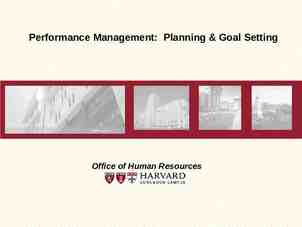Wireless Networking & Security Greg Stabler Spencer Smith
12 Slides75.00 KB

Wireless Networking & Security Greg Stabler Spencer Smith

Preview Brief History of Wireless networking Types of Wireless Security o Unsecured o WEP o WPA o WPA2 Why use wireless encryption? Additional Security Measures for your router What to do if on an unsecured network

History of Wireless Networking Wireless Local Area Networks (WLAN) have been around since 1970. The first model was created at the University of Hawaii by Norman Abramson. This was a star topology and connected 7 computers across 4 islands. Today, wireless networking is largely standardized by IEEE and their various versions of 802.11.

Unsecured A wireless network with no sort of encryption algorithm applied. Any user can readily authenticate and access the internet. Packets are unencrypted and visible. Attacks: o ARP Spoofing - Associate attacker's MAC address with default gateway's IP. All traffic meant for gateway goes through attacker's machine first. Traffic can be passed through (passive sniff) or modified and passed (MIM). o Firesheep - Firefox extension that decodes cookies on unsecured network. Allows log in as user for sites like Facebook and Twitter.

WEP: Wired Equivalent Privacy Deprecated security algorithm for IEEE 802.11 networking. Introduced as part of original 802.11 protocol in 1997. Standard 64 bit WEP uses 40 bit key. Other 24 bits is IV. Can also use 128/256 bit protocols. IV (Initialization Vector) - prepended onto packets and is based on pre-shared key. Such short IVs in 64 bit caused reuse of IVs with same key, which significantly shortened key cracking times of WEP. Attacks: o Aircrack-ng - Linux command line tool. Sniffs packets on a network to obtain IVs and breaks WEP key using information present in the IVs. Can be done in less than 10 minutes.

WPA: Wi-Fi Protected Access Released by Wi-Fi Alliance in 2004 in IEEE 802.11i standard Replaced the exploitable WEP Encryption scheme Required support of TKIP protocol Also supported AES encryption Designed to be backward compatible with older hardware after firmware upgrades 4-Way Handshake and Group Key Handshake "Beck-Tews Attack" - TKIP Exploit: o PhD Candidate in Germany discovered a method for injecting small packets into a network using WPA and TKIP o Does not reveal full network key though, but can be used to spoof ARP and DNS packets

WPA2: Wi-Fi Protected Access v2 Released by Wi-Fi Alliance as upgrade to WPA Backward compatible with WPA Required support of TKIP and AES protocols "Hole 196" Attack: o Allows already authenticated user to spoof mac address of router using the Group Temporal Key (known to all clients) o Client responds using their Pairwise Transient Key, which is unique to them, allowing attacker to decrypt the clients packets

Why does it matter? Unencrypted networks or exploitable encryption schemes allow hackers to: o Steal login credentials o Hijack browser sessions by stealing session cookies o Spoof packets on your network o Use your network for malicious activity (ie Spam, DDOS) Authorities will charge you with the crimes because it's your network

Other Security Measures Enable MAC Address filtering o Prevents unauthorized computers from gaining access even if they have the correct network key Enable router firewall Change default Network SSID to something obscure Change default router password Change encryption password frequently

What to do on Unsecured Wireless Setup VPN Tunnel to a secured machine Setup an SSH Tunnel to a secured machine Force HTTPS on all possible connections Do not transfer sensitive information

Wrap-Up WEP is no longer a secure wireless method WPA2 with AES encryption is currently the best encryption scheme Enable any additional security measures supported by your router If on an unsecured network, use SSH or VPN tunneling to secure your data

References Fleishman, Glenn. "Battered, but not broken: understanding the WPA crack." 6 Nov 2008. http://arstechnica.com/security/news/2008/11/wpa-cracked.ars . "WPA2 Exploit Vulnerability Discovered." 25 Jul 2010. http://www.smoothblog.co.uk/2010/07/25/wpa2-exploitvulnerability-discovered/ Moran, Joseph ."WEP Security is No Security at All." http://www.practicallynetworked.com/security/112907no wep. htm "History of Wireless." John Hopkins Bloomberg School of Public Health http://web.archive.org/web/20070210131824/http://www.jhsph.ed u/wireless/history.html






